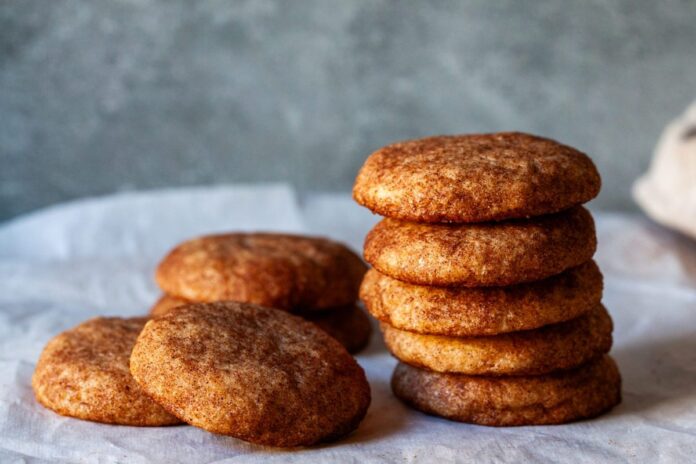Chill the browned butter: We want to freeze the butter until it’s solid throughout but trust me, this speeds it up: Freeze the butter in the bowl for 30 minutes then give it a full stir, scraping down the sides, mixing the still melted parts in the center over the solidified chunks. Return to the freezer for another 15 to 30 minutes — it should now be firm throughout. Cut it into chunks, right in the bowl. No need to make them even.
To make the cookies in a food processor: Place the flour, 1 1/4 cups (250 grams) of the sugar, baking powder, baking soda, and salt in the work bowl of your food processor and pulse to blend. Add your cold brown butter chunks and cream cheese and pulse and blend until all visible pieces disappear and the mixture looks like breadcrumbs. Add egg and vanilla and blend until mixture is fully combined, scraping down as needed (dough will look like boulders) then keep running the machine for approximately another full minute, until the dough mixture looks thick and smooth.
To make with an electric mixer: Place the flour, baking powder, baking soda, and salt in a bowl and whisk to combine. In a large bowl or the bowl of a stand mixer, beat cream cheese, chilled brown butter, and 1 1/4 cups (250 grams) of the sugar until fluffy. Add egg and vanilla and blend again, scraping down the bowl as needed. Add flour mixture and beat just until flour disappears. In some cases, dough made with this method will feel too soft to roll into balls in your hands; if so, let it chill in the fridge for 20 minutes or so before using.
Heat oven: To 375°F (190°C)
Finish the cookies: Line two large baking sheets with parchment paper. In a small bowl, combine remaining 3 tablespoons (40 grams) granulated sugar and all of the cinnamon. Scoop cookie dough into 1.5-tablespoon-sized balls (I’m using a #40 scoop), roll briefly in your hands to smooth them, then roll them in the cinnamon sugar mixture before placing on the prepared baking sheet. Use your fingers to slightly flatten (picture: 1/3 of the way) each dough ball. Repeat with remaining cookies, spacing them two inches apart.
Bake cookies: For 10 to 11 minutes. They will still feel very soft and underbaked on top but they will set up as they cool, promise. Let the cookies rest on the baking sheet for 2 minutes, then transfer the cookies to a rack to finish cooling.
Do ahead: These cookies keep for one week in an airtight container at room temperature.
Notes:
- Basic butter: I’m calling for basic, non-European, regular butterfat butter here — you know, the kind that comes in a 1-pound box with four “sticks” at most American grocery stores; store brands are fine. [If you’d like to use a fancier, higher butterfat butter, you’ll want to add back less water after browning the butter.]
- Why the water: When you brown butter, the water content of the butter cooks off (that’s what causes all of that sputtering in the pan) and we want to add it back to ensure that the cookies have the perfect tender texture. I used to measure the water loss by volume and would recommend adding just shy of 1 1/2 to 2 tablespoons of water back per 1 cup of butter. But recently I’ve begun weighing my brown butter instead and was surprised to learn that what began as 227 grams of butter became 186 grams after browning (i.e. minus 41 grams), meaning you’d want to add 2 tablespoons plus 2 teaspoons of water (40 grams) back. However, I found these cookies had the best texture rounding this to 3 full tablespoons (45 grams) of water, and call for it here. Was that super nerdy? Yes. But I know someone was going to ask!



